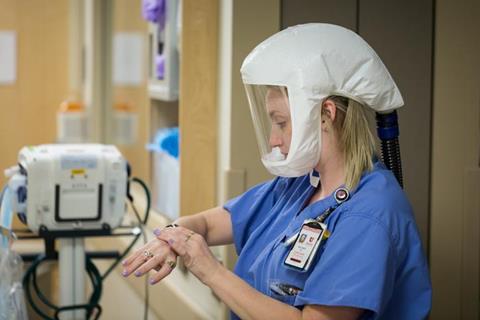One of the most common health care-associated infections spreads within intensive care units (ICUs) more than three times more than previously thought, new research has found.

Clostridium difficile infection—commonly called C. diff—causes diarrhea, abdominal pain, and fever and is lethal in about 6% of cases in the U.S. The disease is highly contagious, but in previous research, direct patient-to-patient transmission seemed to occur rarely. Now, by tracking the bacterium through the hospital environment, rather than on patients alone, scientists have uncovered previously undetected movement of C. diff bacteria through hospital settings.
READ MORE: C. diff uses toxic compound to fuel growth advantage
READ MORE: Synthetic microbiome therapy suppresses bacterial infection without antibiotics
“There’s a lot going on under the hood that we’re just not seeing,” says Michael Rubin, MD, PhD, epidemiologist and infectious diseases specialist in the Spencer Fox Eccles School of Medicine at the University of Utah and senior author on the study. “And if we ignore that, then we’re potentially putting patients at unnecessary risk.” The results are published in JAMA Network Open.
Bacterial movement within the environment is common
To track infections throughout the health care setting, the researchers sampled for C. diff from nearly 200 patients across two intensive care units (ICUs), as well as collecting thousands of samples from hospital room surfaces and health care providers’ hands.
The researchers used whole genome DNA sequencing to precisely track bacterial movement. Different bacterial samples have genetic differences, which the researchers measured to track movement of C. diff around health care facilities. The team was even able to use these differences to determine if two bacterial samples came from the same patient, rather than being acquired independently from a source outside the hospital.
Movement between surfaces
The team detected the bacteria in 10% of patient ICU stays—either on the patient’s body or in their immediate room environment. And in most of those cases, the bacteria were genetically identical to those found in another patient or another patient’s room, suggesting that the bacteria originated from the same patient rather than coming from two different sources.
“We find about the same amount of patient-to-patient transmission as previous studies,” explains Lindsay Keegan, PhD, research associate professor in epidemiology at U of U Health and first author on the study. “But what we find that’s novel is that there is a lot more movement of C. diff between surfaces, from surface-to-patient, and from patient-to-surface than previously found.”
Revealing long-term spread
By simultaneously tracking different bacterial varieties on patients, health care providers’ hands, and in the environment, the researchers uncovered cases of potential transmission that wouldn’t have been caught with other methods.
Notably, the team discovered that for more than half of potential transmission events, the two patients involved were never even in the hospital at the same time—sometimes being separated by weeks. The key to this paradox is the exceptional hardiness of C. diff: the bacteria can survive for a long time outside the body, withstanding common antibacterial measures such as alcohol-based cleansers. Bacteria from one person could be inadvertently transferred to surfaces in a different room, where they could lie in wait for another patient, undetected.
Importantly, not all C. diff bacteria cause disease, and most of the C. diff spread the researchers observed involved harmless bacterial varieties. However, the researchers say that the spread of non-disease-causing C. diff suggests that similar transmission of disease-causing C. diff could be going undetected.
How to prevent infection
The researchers say that they hope their results lead to stronger precautions to prevent the spread of disease within hospitals.
“What I’m hoping we get from this paper is that health care providers put a greater emphasis on infection prevention measures and adhere to them as much as they possibly can,” Rubin says. Using personal protective equipment such as gloves and gowns, as well as practicing rigorous hand hygiene, are crucial, he adds. “Those are the measures that can help interrupt this type of invisible transmission.”







No comments yet